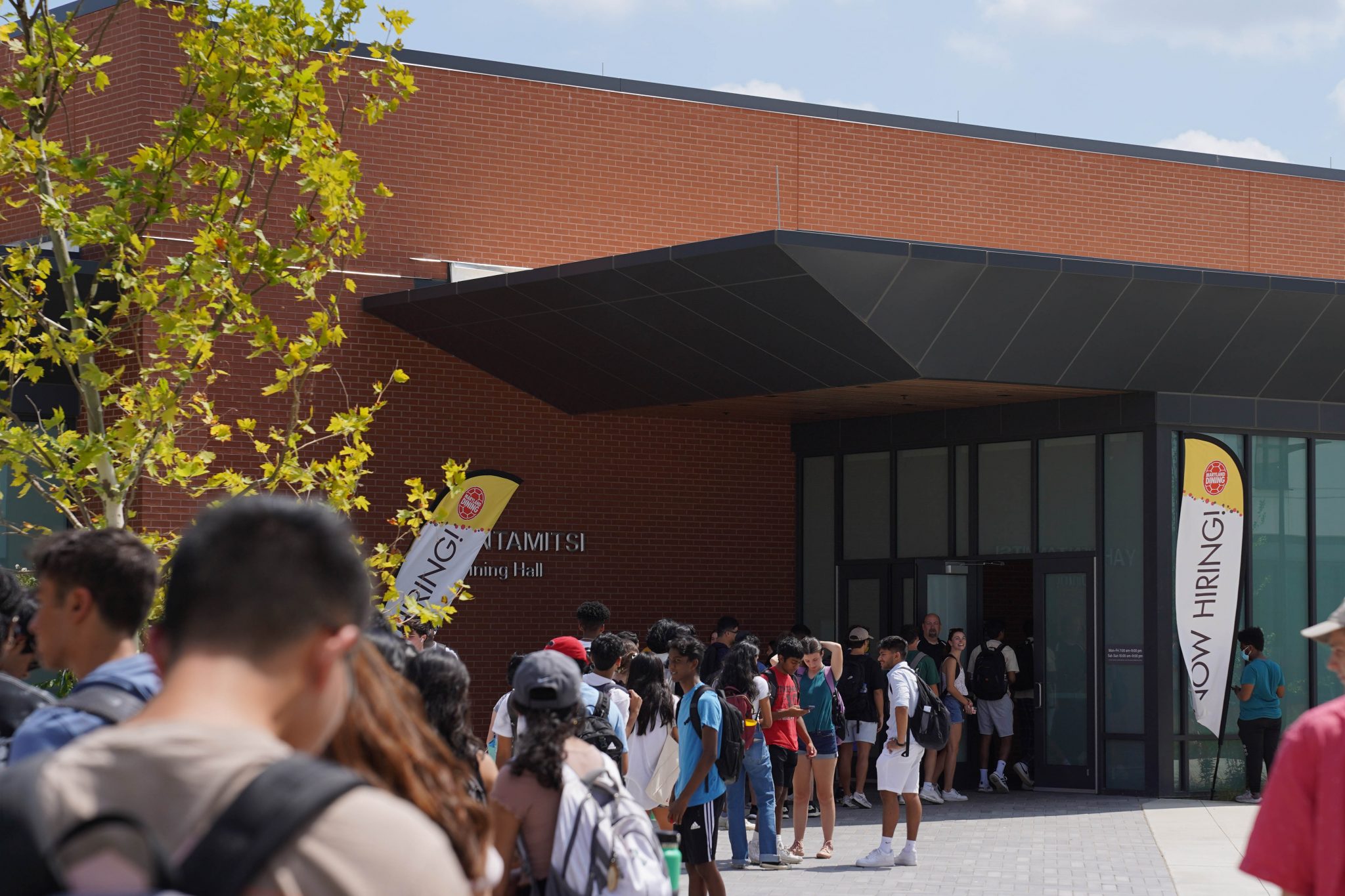Yahentamitsi Dining Hall made up more than half of all dining hall visits from University of Maryland students with dining plans during fall 2022 — more visits than South Campus Dining Hall and 251 North combined — according to data obtained by The Diamondback.
With 922,479 hand waves during fall semester, the Yahentamitsi Dining Hall had the most hand waves in one semester of any University of Maryland dining hall since fall 2017. South Campus Dining Hall had the second highest number of hand waves with 30 percent and 251 North accounted for about 14 percent of hand waves.
“[Yahentamitsi Dining Hall] being new all by itself is going to boost its popularity a great deal,” Dining Services spokesperson Bart Hipple said.
Yahentamitsi Dining Hall, which opened last semester, offers a wide variety of food options, including a unique grill station for sandwiches as well as a gluten-free section.
Senior physiology and neurobiology and psychology major Rebecca Li, who lives in South Campus Commons, has a connector dining plan. She travels to Yahentamitsi Dining Hall for fun dates with her friends, she said. This is often the case for many upperclassmen who live on South Campus, according to Hipple.
[UMD esports studio may come to former North Campus Dining Hall]
“I would really prefer to eat their foods,” Li said. “I just feel like there’s more options, like better options.”
The new dining hall may have an increased amount of hand waves due to the closure of North Campus Dining Hall located in the Ellicott Community in fall 2022. Although North Campus Dining Hall was the most visited dining hall according to data from 2017 to 2022, the number of hand waves decreased by nearly 25 percent in five years.
Yahentamitsi Dining Hall may have also boosted hand wave counts by serving two additional dorms in the Heritage Community, according to Hipple.
But despite the convenience of Yahentamitsi Dining Hall, it can be too crowded for some students.
“I really like the food there,” freshman architecture major Ally Tully said. “It’s just really hard to get a table, and it’s a stressful environment.”
At the beginning of the fall semester, Dining Services had people wait at the doors of Yahentamitsi Dining Hall to prevent overcrowding, according to Hipple. Dining Services still watches the rate that people come in to ensure seating for everyone, he said.
[Half-baked hopes: Stamp Panera opening delayed to August]
Some students who prefer to have a quieter meal visit 251 North instead. This dining hall has consistently had the lowest number of hand waves since fall 2017. In the fall 2022 semester, 251 North had 225,691 hand waves.
The hand wave counts may be lower at 251 North because it is in a more secluded location, Hipple said. There is also a lack in food options in terms of changing the daily menu, according to sophomore psychology major G Rivenburgh.
However, hand waves from 251 North have increased by almost 15 percent over the last five years. Dining Services tried to increase visitation at 251 North by having special features in the dining hall, Hipple said. 251 North has a Maryland Dairy ice cream station and a certified Purple Zone for allergy-free foods.
“The staff everywhere does a great job, but 251 North in particular gets called out for friendly staff,” Hipple said.
South Campus Dining Hall seems to be a neutral option because it is less crowded than the Yahentamitsi Dining Hall, but has more food variety than 251 North, Rivenburgh said.
South Campus residents will often eat at South Campus Dining Hall if they do not feel like making the trip to Yahentamitsi Dining Hall, Li said. She also appreciates how South Campus Dining Hall has a less dense dining area and an iconic Mongolian Grill.
“I like how they switch up a lot of what they do,” freshman psychology major Madison Blaustein said.
The amount of hand waves at South Campus Dining hall has decreased by 16 percent since fall 2017.
According to Hipple, Dining Services recently hired an assistant director of South Campus Dining Hall and will soon hire a South Campus Dining Hall executive chef, who will work toward increasing visits to the dining hall.



